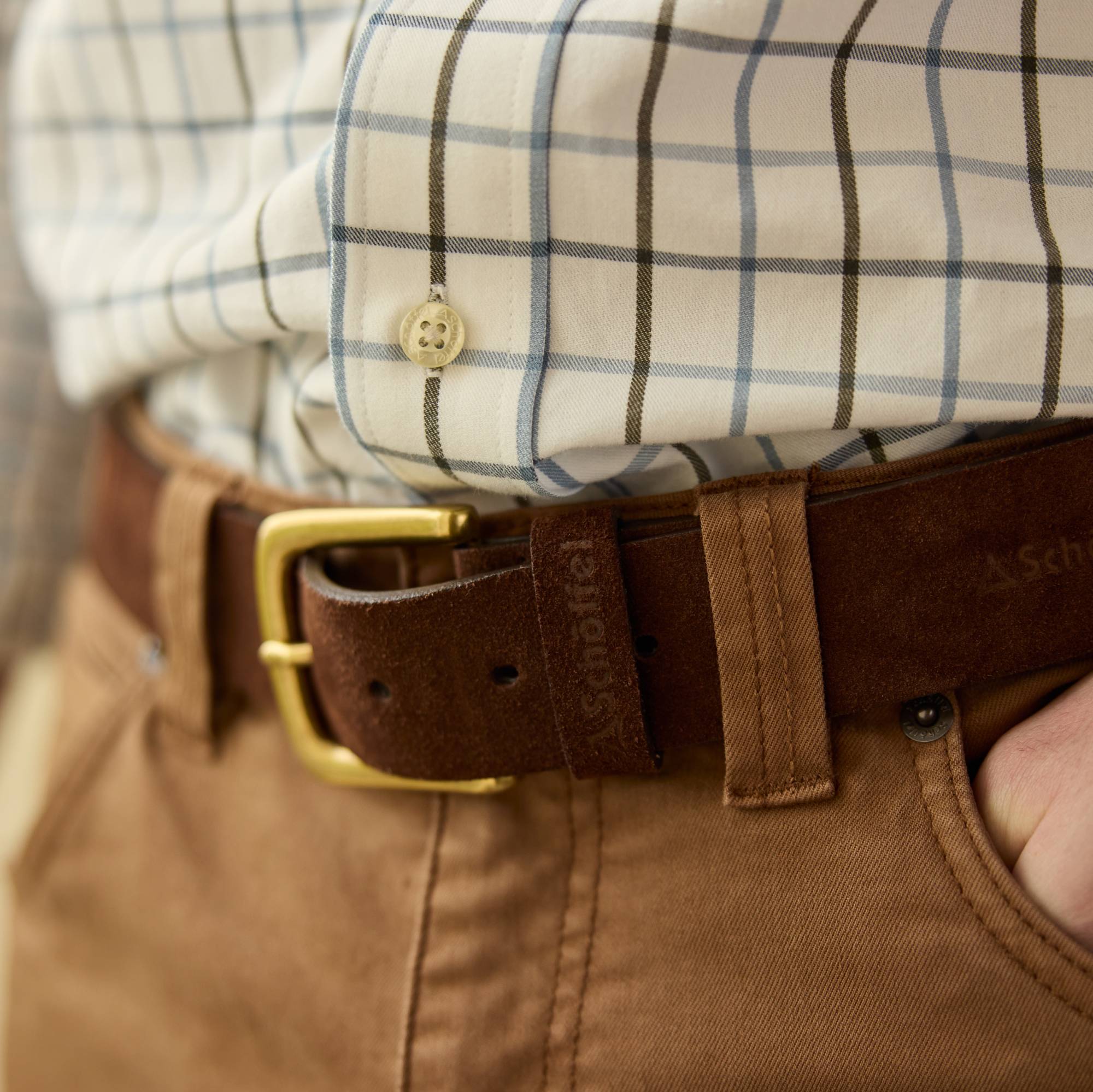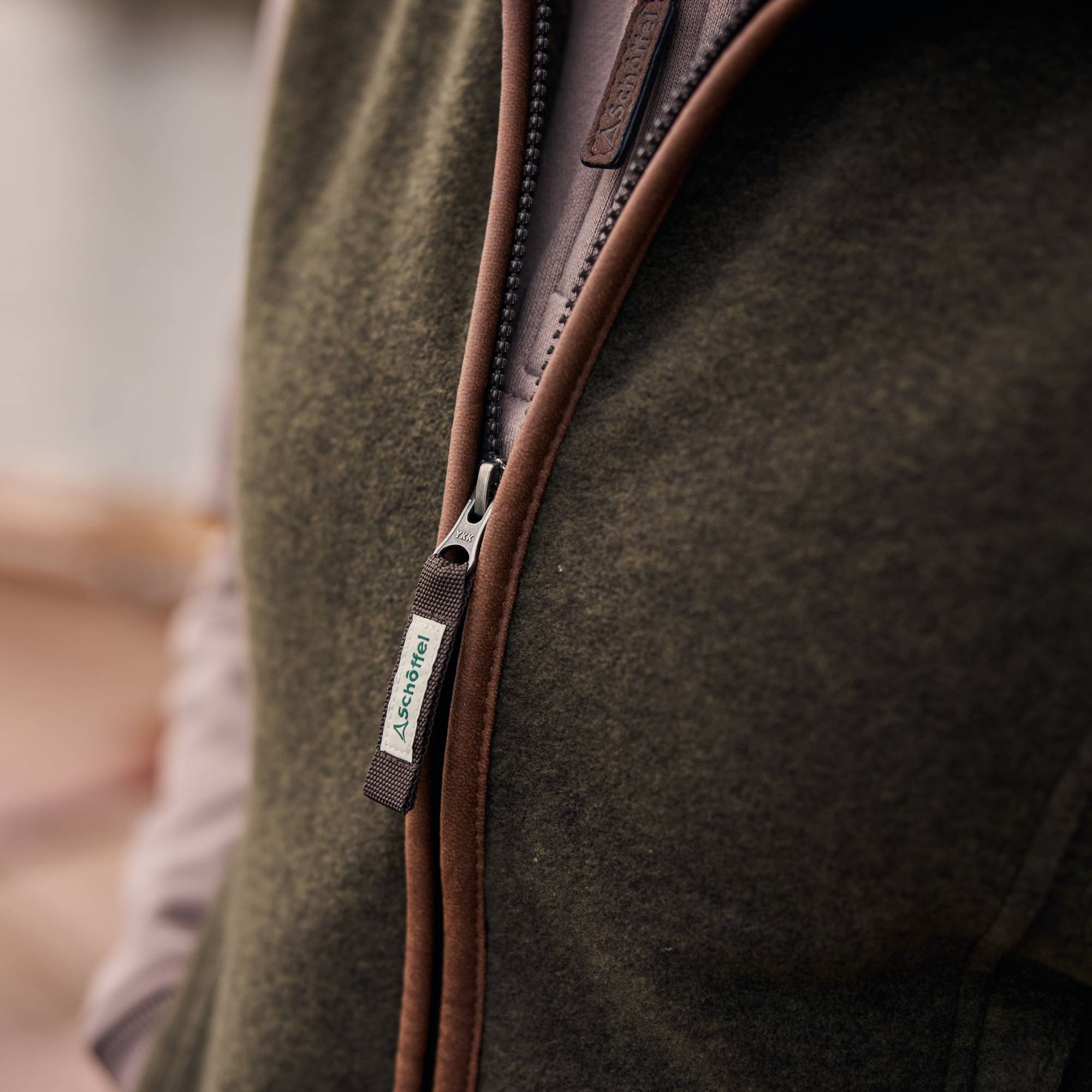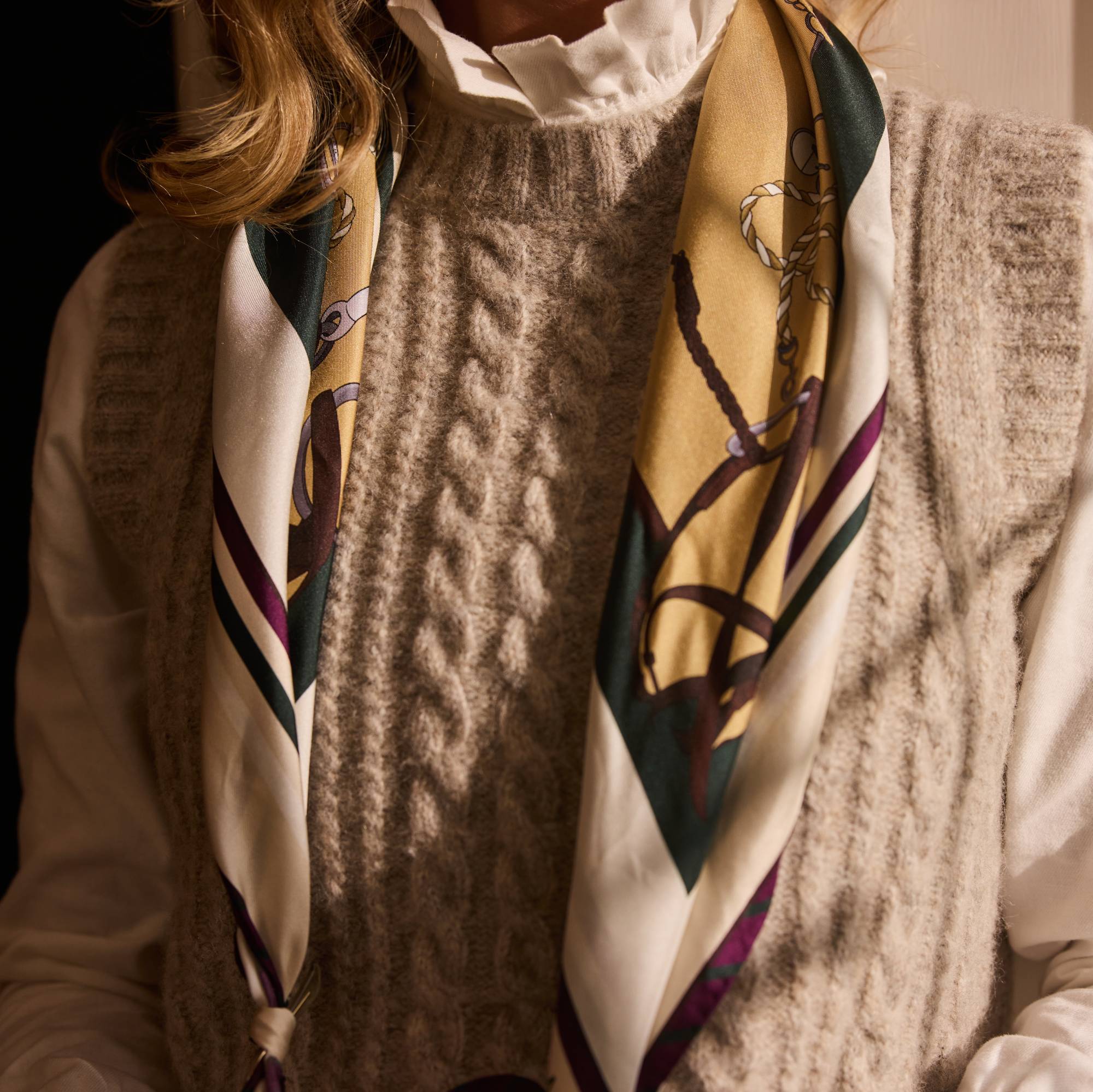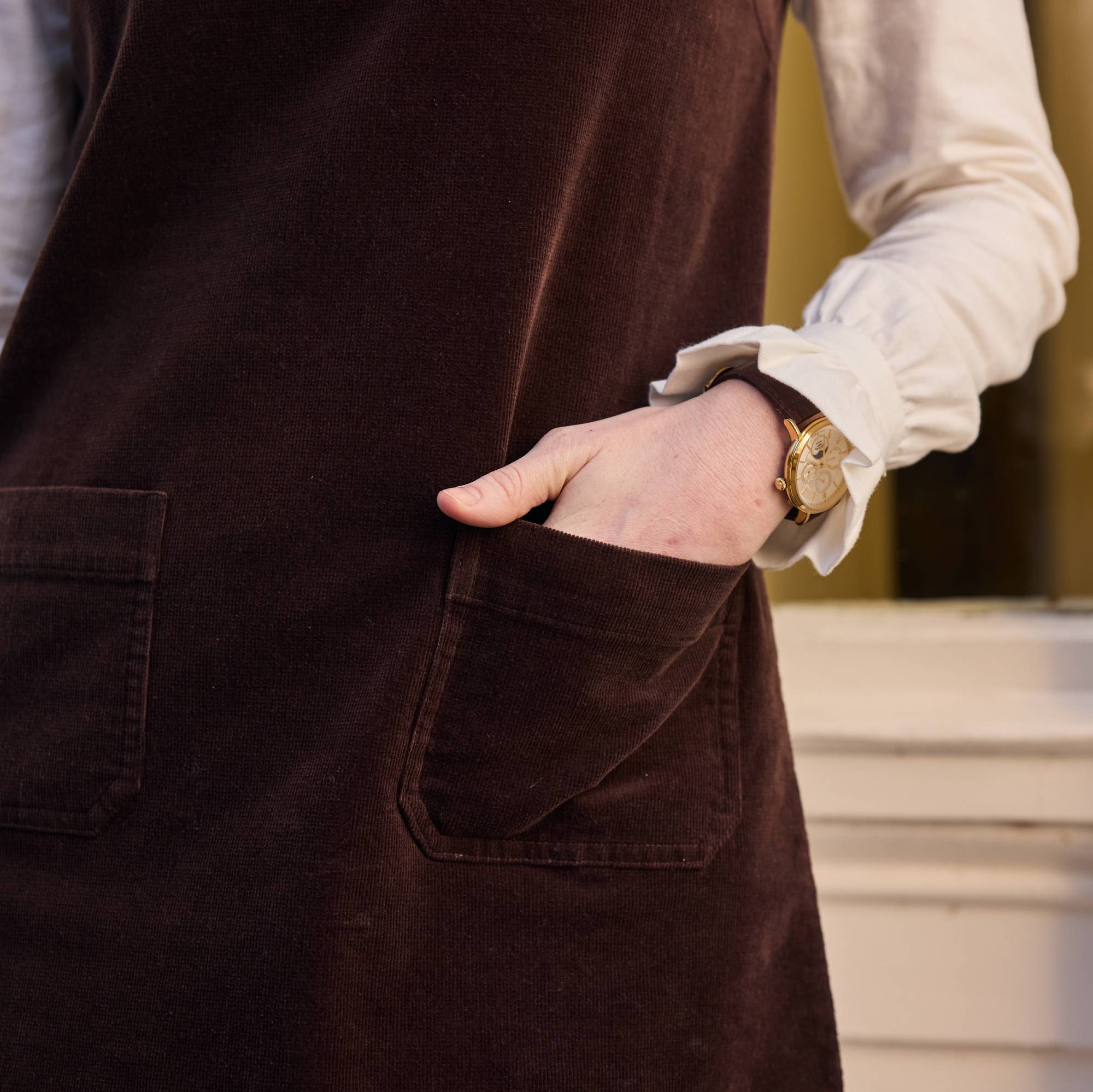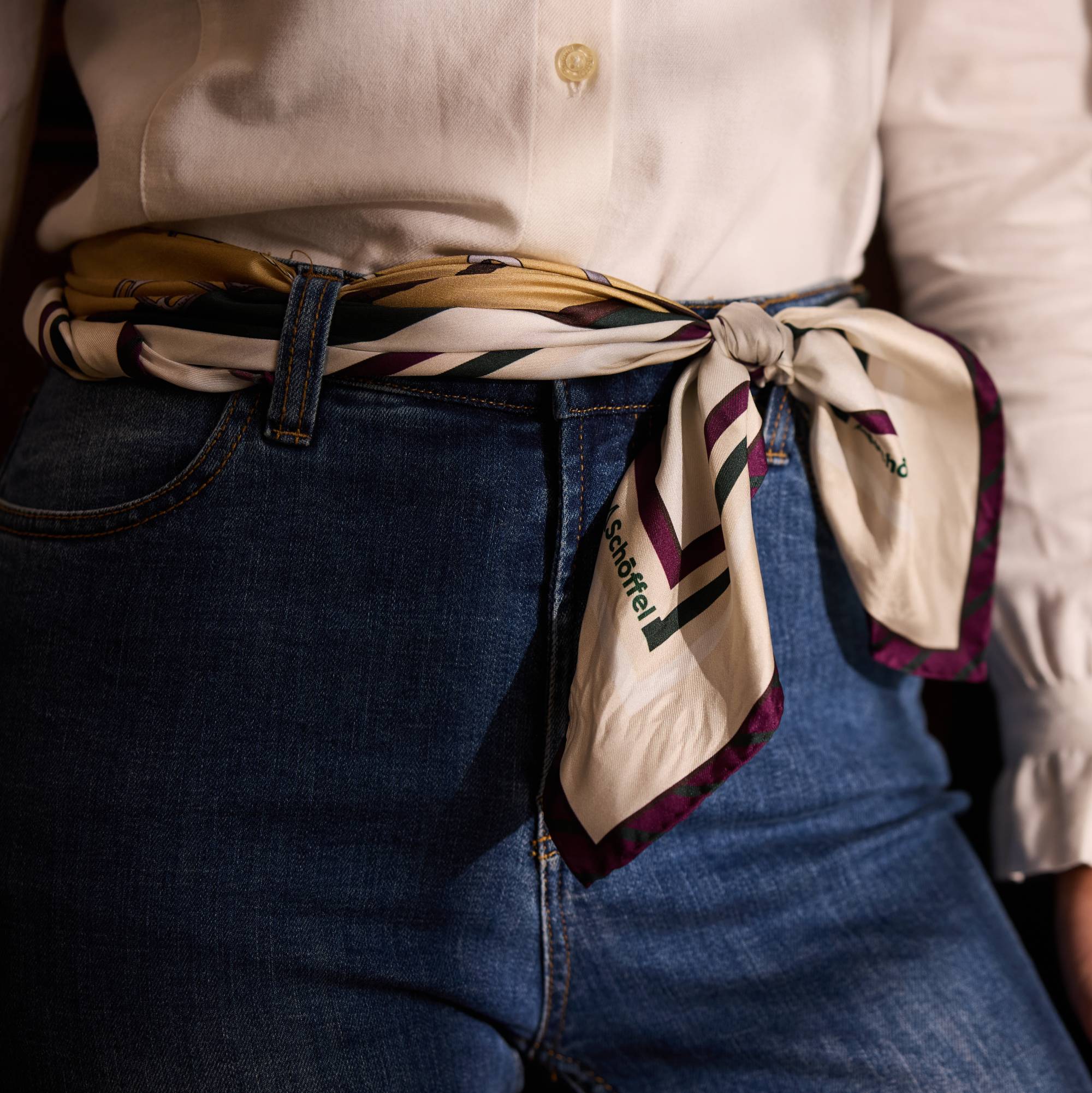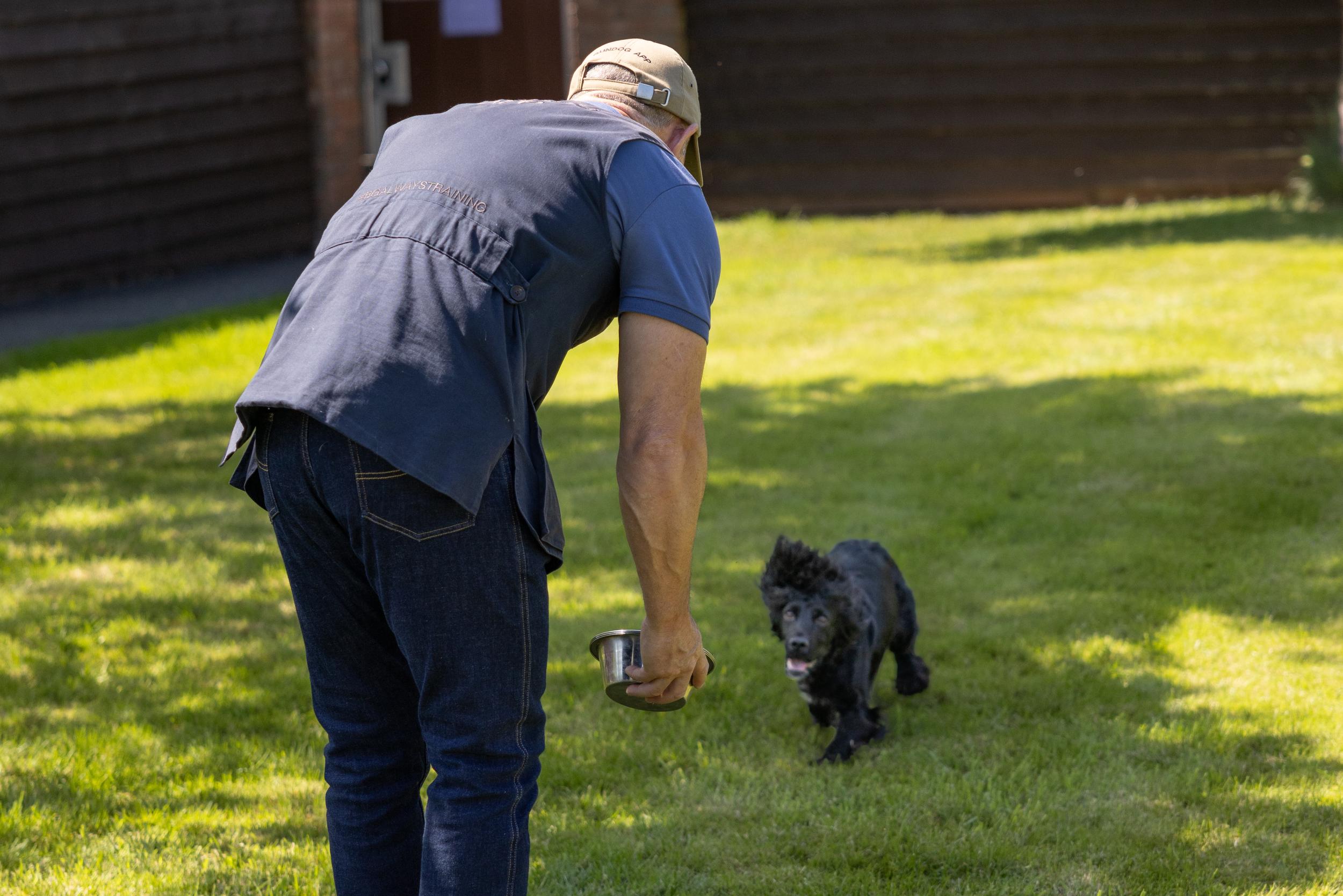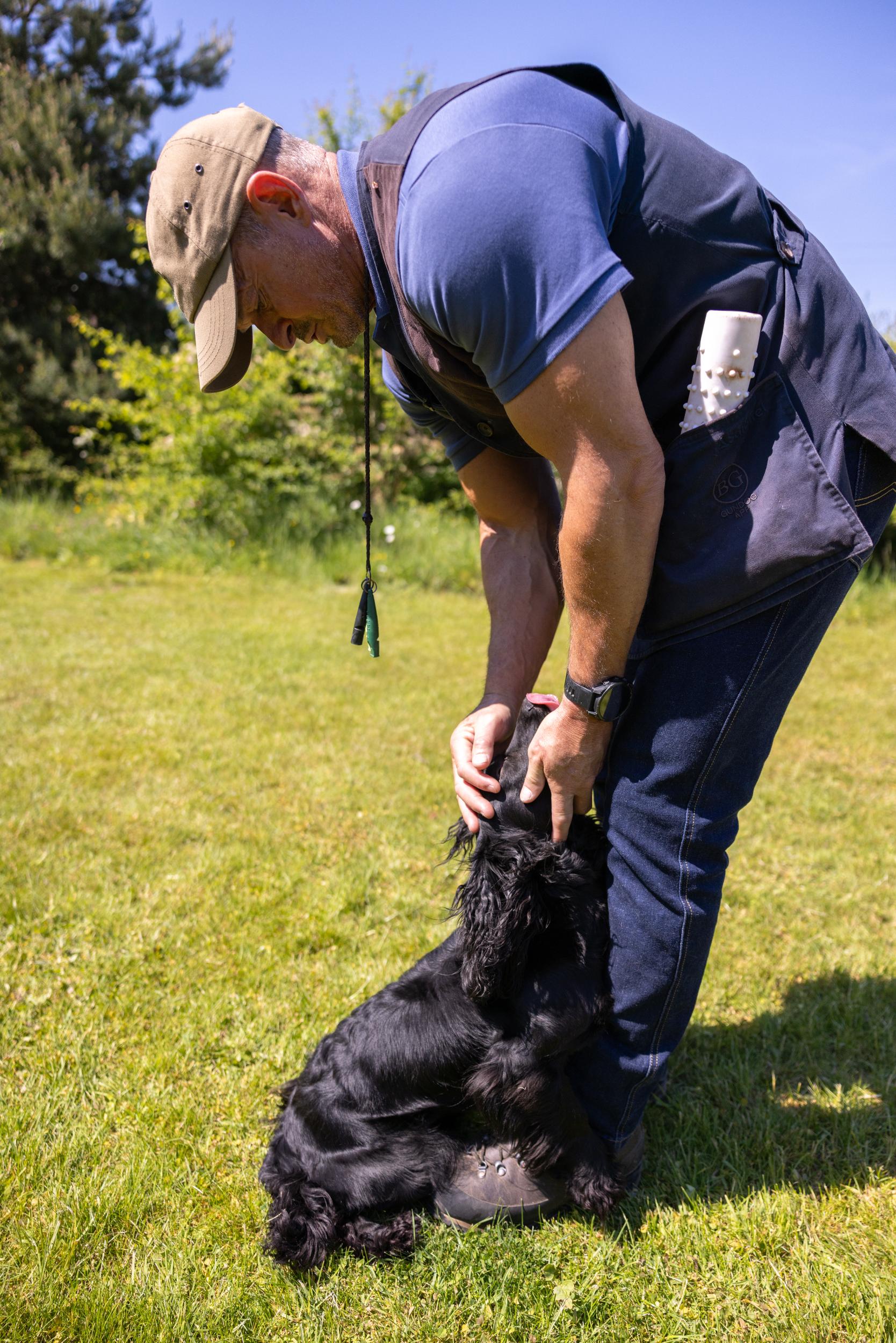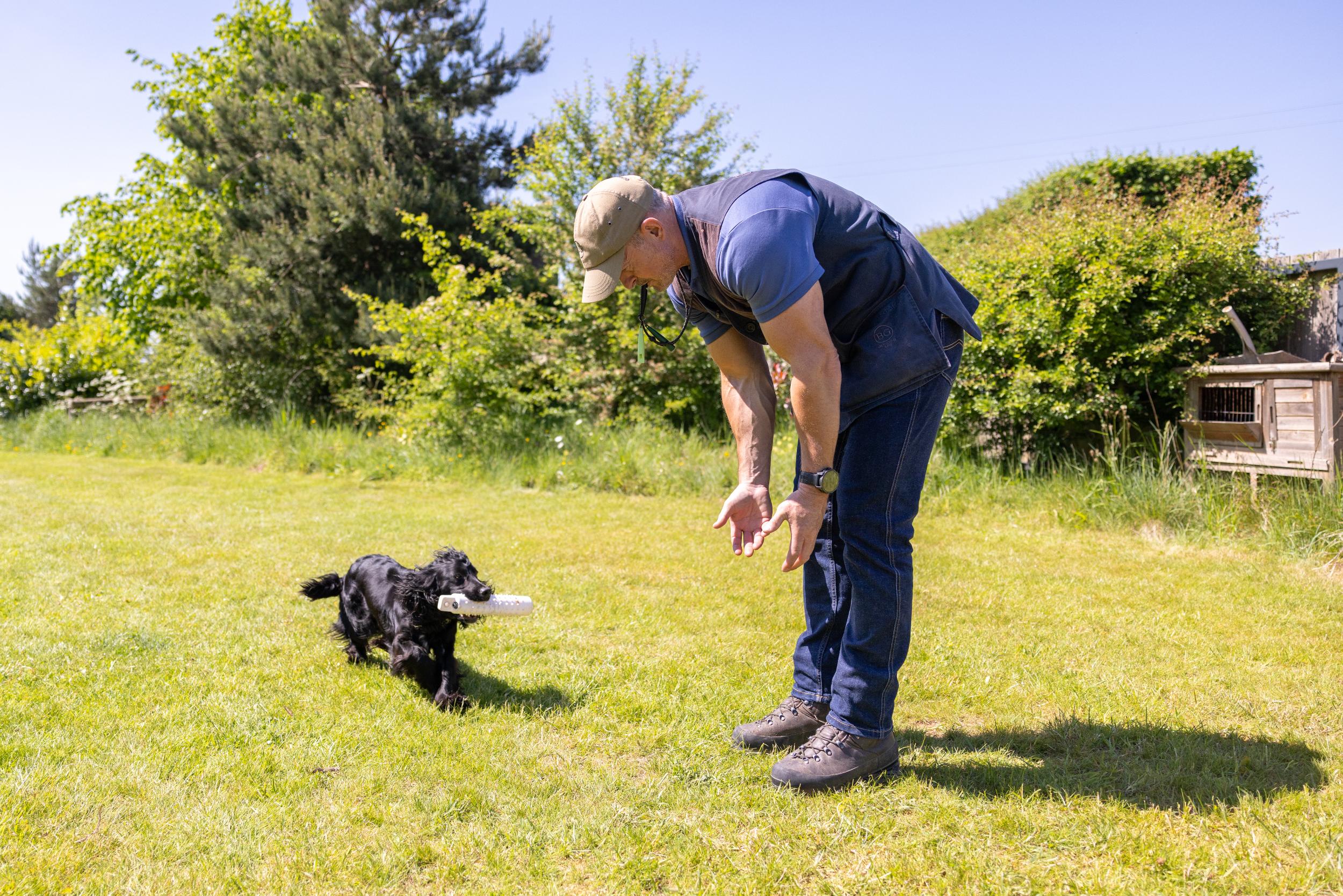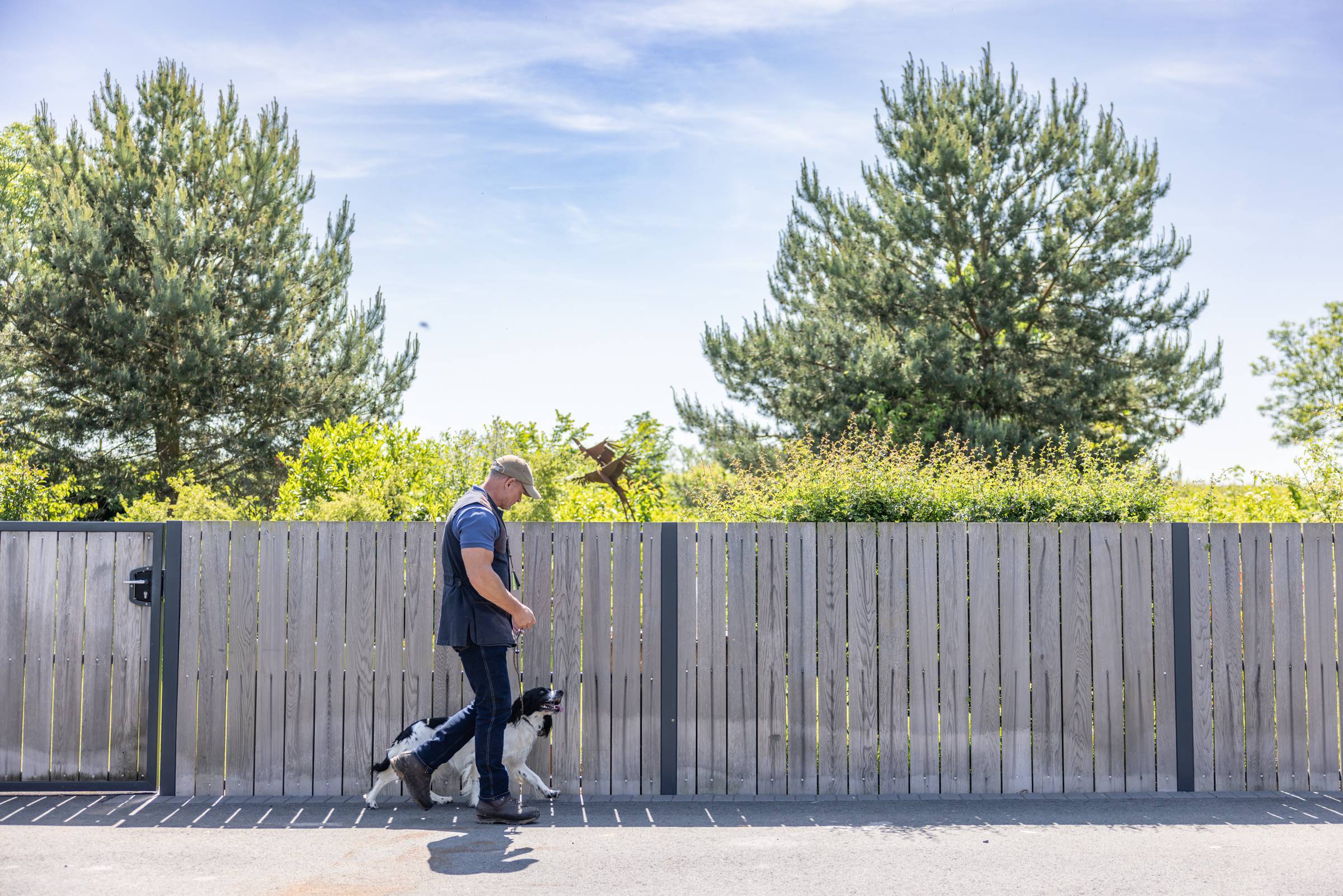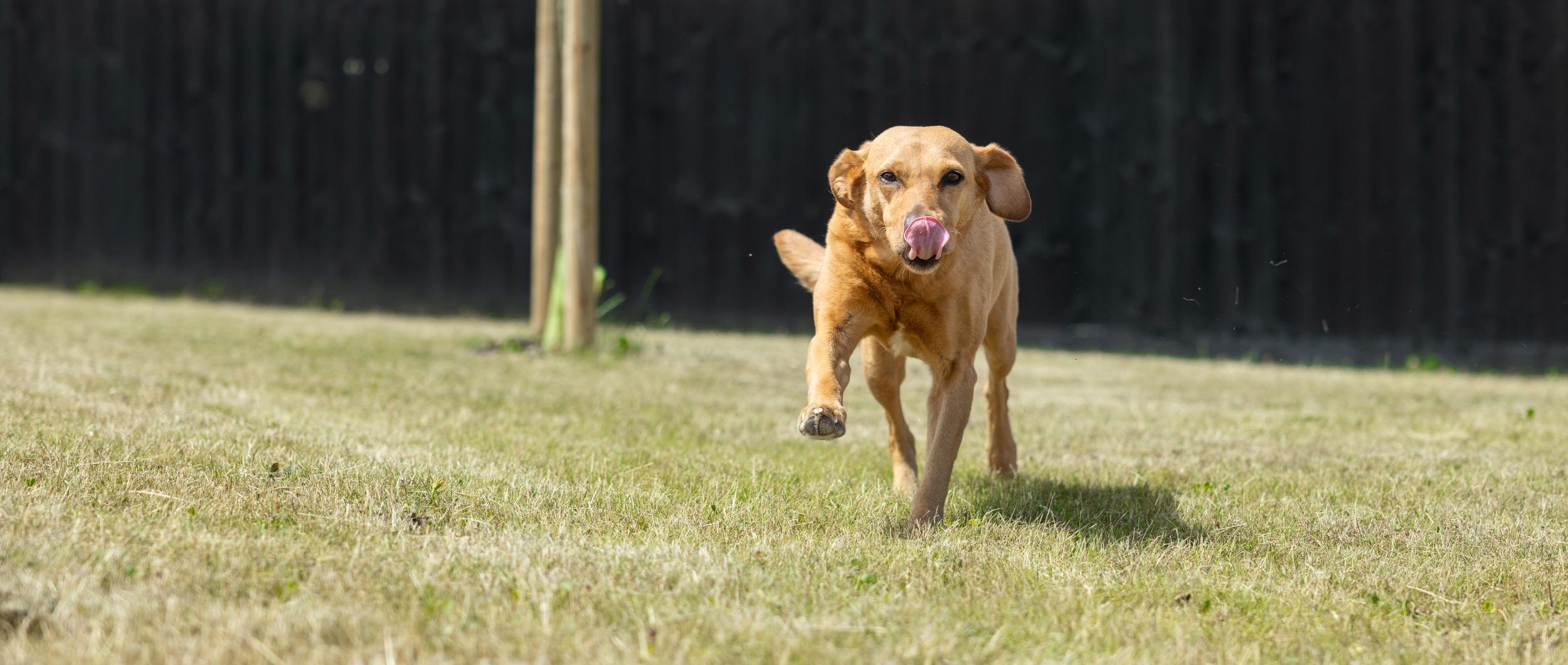
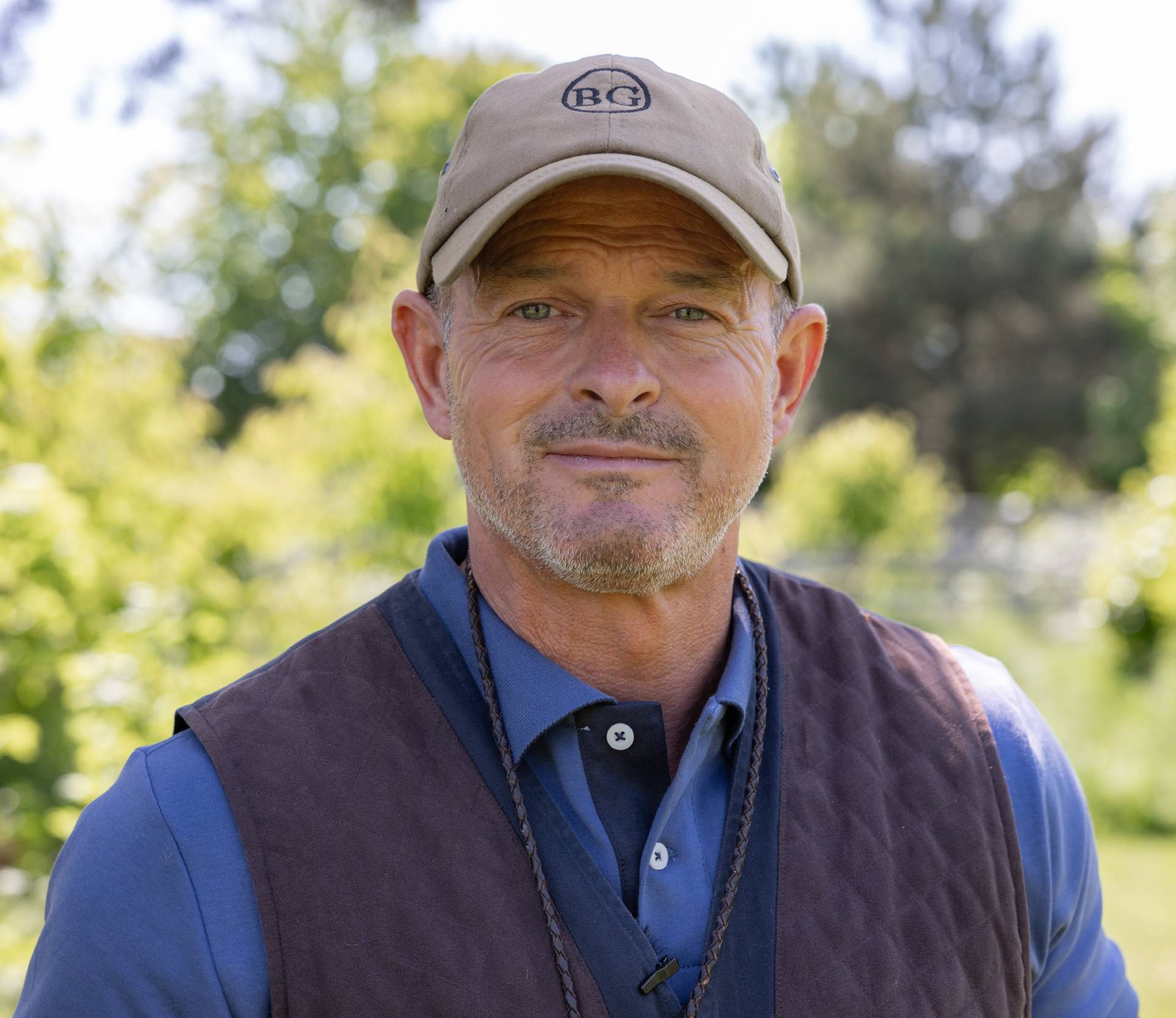
Dog training tips with Ben Randall | Part 3 – how to master recall
In part three of our dog training series, Ben Randall of Beggarbush Gundogs in Herefordshire explains how to teach your dog to come back when called.
What is the number one dog training issue people seek my advice on? Recall. “Ben, how do I get my dog to come back to me?” ...
It’s such a common issue, though it needn’t be if you’re prepared to put in the time to address it. There’s no quick fix for this, but the time invested is more than worth it! Don’t we all yearn for a dog we can trust to come straight back to us when called, regardless of the situation?
Recall training can be broken down into several stages. The first is to introduce the recall command and build a very positive association with it. Before we go any further, though, we should touch on a few key mistakes I often see being made that will make any attempt at the below training exercises a lot more difficult...
Should I let my dog play on its own?
One of the biggest mistakes I see is people giving their dogs too much freedom from an early age. It might seem fantastic watching a dog find its own fun, use its nose, and explore and play with other dogs as it wishes, but these early days are crucial.
If you are allowing a young dog this freedom on its daily walks or time in the garden every day – and many people do, twice a day for at least 30 minutes – you are essentially teaching the dog to develop and hone its own skills and use its own initiative to find far more interesting things than you. If it is successful and finds something to chase, then we have a real challenge on our hands convincing said dog to regard us as the most interesting thing in its life.
What we should be doing at this stage is building a relationship with our dogs so we are the focal point in every situation – we are the pinnacle of interest. The dog must want to respond to us and stay connected with us because the rewards come directly from us. The dog should want to be part of a team with us, and work with us, rather than run off and do its own thing.
Simply put, the more freedom we give our dogs to find their own enjoyment, the harder it will be to teach a reliable recall.
Building a positive association with the recall command
The first thing we need to do is teach our dog that if they listen to the recall command and respond to it in the way we want them to, good things will follow.
As with the other areas of a dog’s training (see part one and part two of this series) I like to start at mealtimes; so, right from the start, the dog hears the recall command when it is being fed or when the food is being prepared – it’s a very positive association.
Every time I feed the dog, it is a short and positive training session. And we can split our dog’s food into small portions to provide more of these training opportunities.
To teach the recall, I start in a distraction-free environment with a food bowl in my hand, say the dog’s name once, tap my left leg, and give three or four short pips on the whistle. When the dog comes to me, I put the food down, I then continue with a few more sequences of the pips on the whistle, again building that positive association between command and reward while the dog is eating.
I do this twice a day – 60 times a month. Importantly, sometimes I don’t use the food as a reward and instead the reward is calm praise from me (I will get down to the dog’s level and give it a scratch behind the ears).
Training opportunities around the home
I also start to mix up the environment I am recalling the dog in. It might be in the kitchen, the hallway, or on the patio – the key thing being that distractions are introduced very gradually and only when we are happy the dog is responding every time in the previous setting – we must always be the ‘most interesting thing in the room’.
Remember, if our dog has not fully mastered recall exercises in the kitchen or the lounge, more time is needed before we move into, for example, the garden or the park where temptations will be far greater.
Developing the response to the recall
You will notice that up to now, I haven’t mentioned anything about using a verbal command – I have just been using the dog’s name and the quiet pips on the whistle. In the early days I will often use the ‘heel’ command (see part two of this series for how to teach that) alongside the whistle pips to encourage the dog to come to me, too.
Patience training – the focus of part one in this series – also comes into play here. If we have a dog that will stay put, we can walk away from it while it is sitting patiently, and then call it to us.
I won’t reward with food every time the dog comes to me. It might be a piece of kibble every five recalls, with calm praise in between. Ultimately, the aim is to have that dog very eager to come straight to you and always keeping half an eye on you in case you blow that whistle.
How long does it take to teach a dog to come back to you?
I never put a timeframe on these things. All dogs and trainers will learn at different rates. And it’s not a race – these things take time and should not be rushed. Besides, we don’t just stop training when we feel we have reached a certain level with our dogs. Consistency is more important than setting ourselves deadlines.
There are countless situations that you can practise recall in, working up to each in small steps. It’s best to treat recall training as a long and varied journey. We establish the fundamentals in environments without lots of smells and noises and movement, but we are always working towards having a dog that will come back to us no matter the surrounding temptation – and in the countryside, temptation is rife.
I start to introduce temptation and distraction very gradually when I move into the garden, which in itself is more interesting for a dog. Again, patience training is key here.
Distraction may take the form of a ball or a dummy being thrown in one direction, or over the dog’s head, while it sits patiently a short distance from me. Then I will recall the dog to me, away from that distraction. From there, I can then build on the distance between me and the dog, increase the length of time it sits and waits for the recall command, or throw multiple balls and dummies – increasing the level of temptation – before calling the dog to me.
Most of the time I will then walk to collect whatever I have thrown for the dog myself, but every now and then I will send the dog for that ball or dummy as a reward after it has returned to me. Crucially, it knows that reward comes from me because it has responded to the recall command.
To advance this further, I will work up to recalling the dog when it is on the way to retrieve an object. I will start with my dog sitting by my side, throw the ball, send the dog for the ball and then issue the command when it is half way there. When the dog comes back to you, you could then send it again for the ball, this time letting it complete the retrieve as a reward.
What if my dog ignores me?
If your dog ignores your recall commands, it is very likely you have moved through the stages too quickly and introduced too much distraction too soon. And this normally happens in an environment where the dog has grown used to doing its own thing and finding its own fun.
If that environment is in the garden, for example, I advise my clients not to let their dogs off the lead in the garden to commit those faults and build any further on bad habits until the issue has been addressed. Instead, they must go back to basics, teaching the recall command in a distraction-free area. Only when that is cracked will I progress into a smaller, maybe fenced, area of the garden, where we have a greater degree of control.
What are the key things to remember when teaching our dogs recall?
1. Do not allow your dog the freedom to do as it wishes from a young age when you take it out. It will soon find its own fun and choose to ignore your attempts to call it back to you.
2. Nurture a relationship in which your dog sees you as the most interesting thing in its world; the clearer your dog’s understanding of this, the easier and more effective recall training will be.
3. Start recall training in a low-distraction environment at mealtimes, as an extension of other elements of foundation training, like patience training and heelwork.
4. Add distractions and change scenarios and locations only when you have mastered recall in a controlled, distraction-free setting.
5. Keep training sessions short, positive, and enjoyable. And remember, patience is key!




